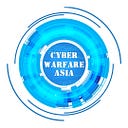Hong Kong; The Protest Capital of the World
Hong Kong has witnessed a rise in mass protests; recent ones have been triggered over an extradition bill, allowing suspected criminals to be sent to Mainland China to face trial. This has given rise to fear that freedom of citizens is being threatened. Even though, after massive protests in June, the bill was suspended, but remains “not formally dead.” The protestors are also demanding implementation of complete democracy and amnesty for all arrested protesters.
Hong Kong, being part of China, was originally handed by the British rule in 1997 under a Bilateral Treaty, on the assurance of safeguarding the territory’s unique way of life for at least 50 years. The history of the current unrest stems from fears attached to the 1989 Tiananmen Square crackdown, 1999’s Beijing overruling of top court and the 2003 national security law — overturned after 500,000 people protested against it. On the contrary, the fact holds true that Beijing does not support the Western idea of democracy and law and is fiercely controlled by the Communist Party ideology — based mostly on ensuring country’s stability and territorial integrity.
On the morning of Wednesday, June 11th, protestors surrounded the area around the legislative building, where lawmakers were all set to debate over the controversial bill. The protest was aimed at calling for open elections. People poured in from all walks of life to support the movement and closely resembled the infamous “Umbrella Movement of 2014,” in which thousands blocked main city accesses for 79 days. Despite the opposition, city leaders vowed to pursue the bill.
On Monday, July 1st, Hong Kong marked its anniversary of return to China from Britain, the night of which saw an upsurge in protests, reaching to a point where a number of protestors broke into the Legislative Council (LegCo). In an attempt to force the government to address their demands, protestors smashed open the building, vandalizing the legislative headquarters with graffiti and defacing symbols, overshadowing the pro-Beijing celebration ceremony of the return of Hong Kong to China in 1997, which allows Hong Kong to enjoy freedoms, not allowed in Mainland China, under the policy of “one country, two systems.”
The otherwise peaceful protest shifted, when a handful activists, armed with metal bars and makeshift rams, entered the building, citing a divide among the masses. These protesters, while holding their ground, answered critics by scribbling a message on a pillar for Carrie Lam, the city’s top official: “It was you who told me peaceful marches do not work.”
